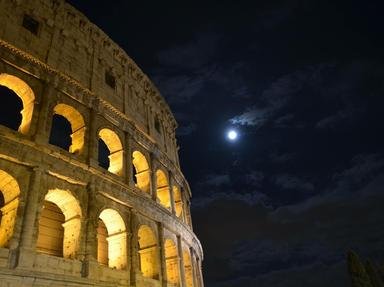Quiz Answer Key and Fun Facts
1. Let's start with a rather specific location: Which modern Bavarian city did the military fort Castra Regina on the Danube river border (ripa) evolve into?
2. On to another "soon" to be city: Which country is the ancient settlement Eboracum located in today?
3. This province was one of the Rome's richest and became vital to its economy after Augustus had incorporated it into the empire.
4. At its height, the Roman Empire stretched from the province of Lusitania in the West to, well, where in the East?
5. Rome had quickly become a major naval power in the Mediterranean during the Punic Wars. As such, harbors were essential for its maintenance. Which new imperial harbor was built on the mouth of the Tiber in the first century AD?
6. Africa was not always the name of the entire continent we know today. What did the term describe in Roman administration?
7. The Roman frontiers (limes) were often a harsh environment but they were not devoid of life. An important archaeological find from which ancient place gives us a look into what living in the periphery of the empire was like?
8. The Alps are both a stunning and treacherous mountain range to navigate - even more so for the Mediterranean Romans. Which road did they build that led straight through them?
9. The Ionian coast was a political hotspot throughout all of ancient history. It was shaped by Anatolian cultures, influenced by Mesopotamian rulers and covered in Greek cities. What did the Romans do with it?
10. Traveling was a big part of elite Roman culture. Next to the roads, the Mediterranean Sea was even more important for getting from A to B. Approximately how long would it have taken a merchant ship to sail from Rome to Alexandria in Egypt?
Source: Author
Boiodurum
This quiz was reviewed by FunTrivia editor
bloomsby before going online.
Any errors found in FunTrivia content are routinely corrected through our feedback system.
